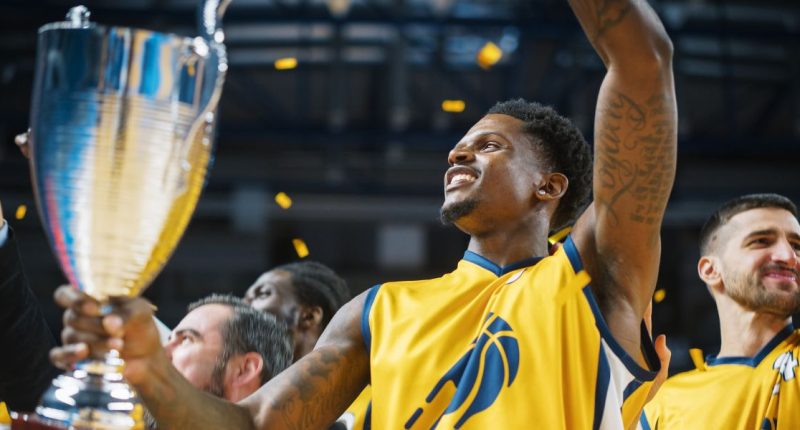Issac Traudt is able to play at the top of his game for the Creighton Bluejays men’s basketball team despite living with type 1 diabetes.
In between play Issac manages his condition by checking his continuous glucose monitor and eating some energy chews if his blood sugar levels are too low.
Athletic trainer Ben McNair said: “I don’t think I’ve ever seen anybody put down a packet of chews faster than Isaac. He can probably put a pack of those down in 10 to 15 seconds.”
- Runner with type 1 diabetes qualifies for the Olympic Marathon Trials
- T1DE: ex-PM chairs inquiry into Type 1 Diabetes Disordered Eating
- Decision support tool launched to explain options available to people with type 1 diabetes
Issac was four years old when he was diagnosed with type 1 diabetes and has never let the condition stop him from playing basketball.
Previous NBA players Adam Morrison, Gary Forbes and Chris Dudley all have type 1 diabetes and had to manage the condition whilst they were playing at the top of their game.
In addition, the former WNBA player Lauren Cox has type 1 diabetes.
Several parents have asked Issac for advice for their children who have recently been diagnosed with type 1 diabetes.
He said: “It’s important for them to know their dreams can still be accomplished. They can still compete in their sports.
“I think that’s what a lot of them worry about. I just want to inspire them and show you can play at the highest level.”
He added: “It doesn’t really matter if you have diabetes or not. It just takes more responsibility. It’s more demanding, but at the end of the day it’s possible.”
Endocrinologist Dr Lori Laffel said: “Technological advances have made it easier for athletes to manage their diabetes.
“In the 1950s people diagnosed with type 1 diabetes were discouraged from engaging in strenuous physical activity because of the dangers of low blood glucose.”
- Guidance on hybrid closed-loop systems for type 1 diabetes published by NICE
- Diabetes service dog saves girl with type 1 diabetes
- People with type 1 diabetes should exercise caution when using fitness video games
Continuous glucose monitors are now commonly used by athletes because they help maintain their glucose levels in their target ranges.
Before switching to an insulin pump at the age of seven, Issac had to have daily insulin injections multiple times per day.
Issac said: “Obviously, in my short lifetime it’s come a really long way. Compared to 40 years ago, I couldn’t even imagine going through this without the technology. It would be really difficult.”
Ben said: “Traudt does a good job anticipating when he needs to up his blood glucose during practices and games.
“As soon as he feels like he’s going downhill a little bit, we do the chews for the most part and not too long after that he’s pretty much back on the floor.”
Dr Laffel, who does not know Traudt, said: “It’s always a thrill when I know people are playing to their potential, working to their potential and thriving while living with type 1 diabetes.”




